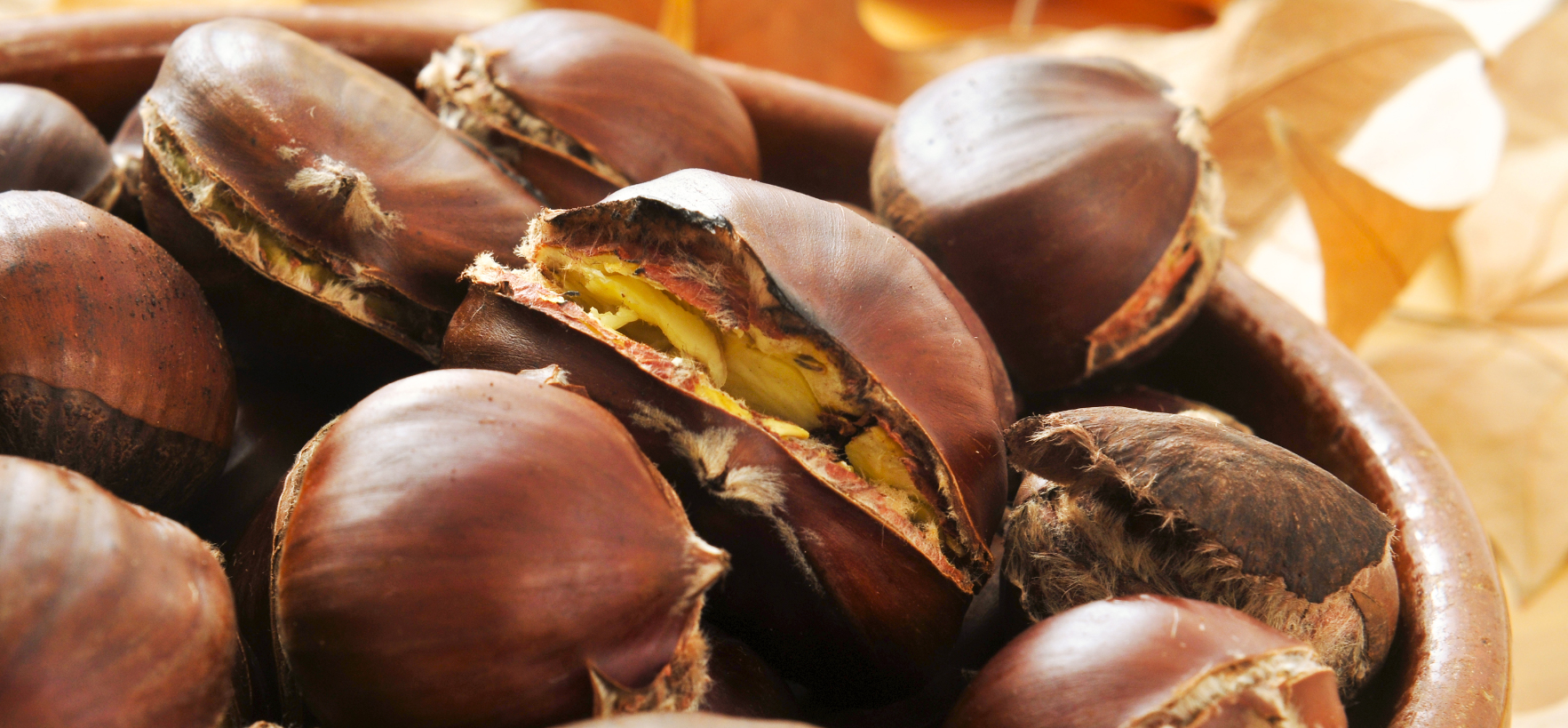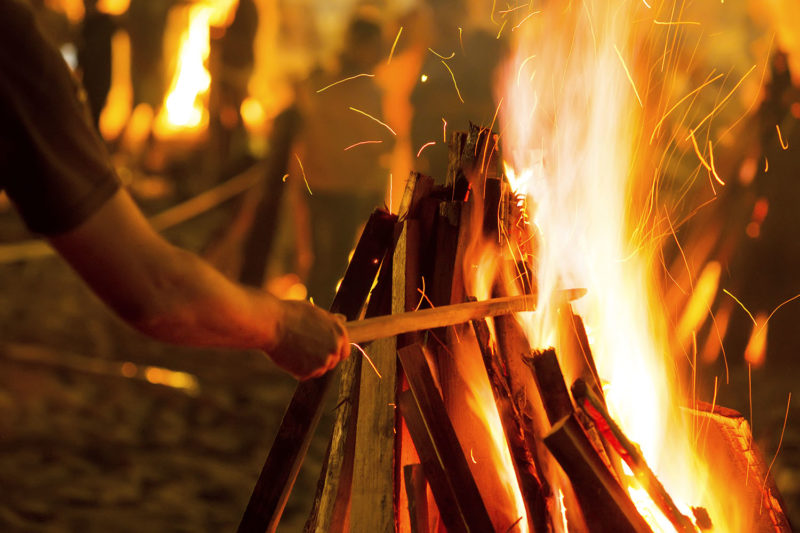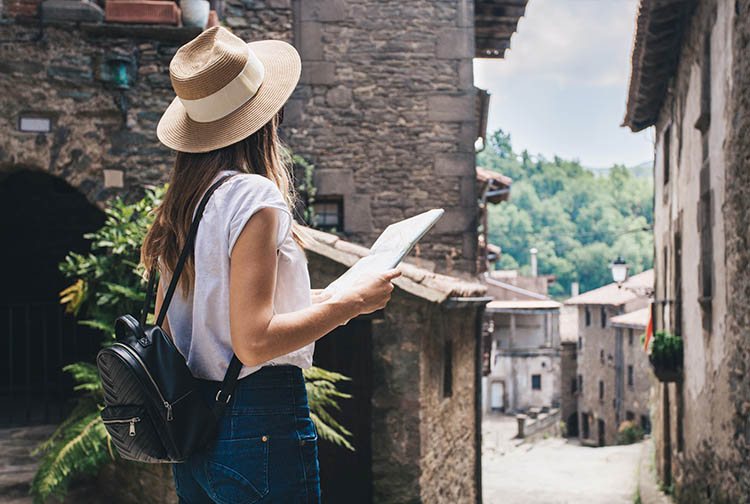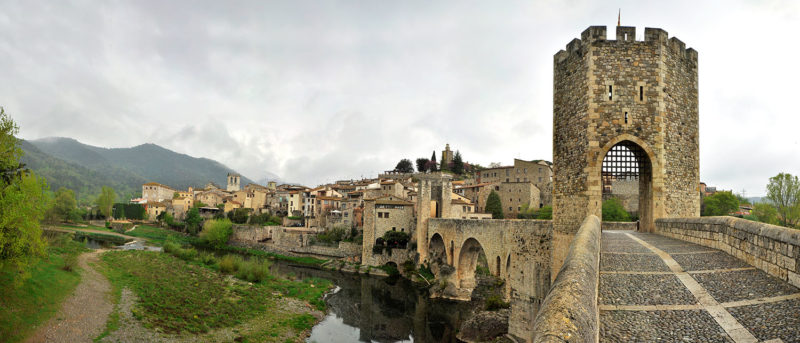

La Castanyada: celebrating the agricultural legacy
Is there something magical about Halloween? Do we celebrate La Castanyada like those who celebrate Halloween in Anglo-Saxon countries? Do we worship death or life? Celebrating autumn with ‘panellets’, chestnuts and sweet potatoes may have more to do with our agricultural past than we think.
The genetic and cultural process that humans underwent five million years ago enabled us to transform objects into utensils, a fact that allowed us to adapt more effectively to different climates. Mobility was key to our survival. But about 10,000 years ago, this nomadism was altered by an even more revolutionary discovery: agriculture.
The ability to produce one’s own food meant that we settled in areas suitable for cultivation and, at the same time, allowed us to keep wild herds in stables to ensure protein for the whole year. These primitive sedentary societies were conditioned forever by an agricultural and livestock calendar. It was then that the first evidence of the worship of gods, goddesses and ancestors appeared.
And what does all this have to do with Halloween? Well, anthropology has studied in depth how there is a pattern, a belief, that is common in the origin of the festivity in an infinite number of cultures all over the world. Their starting point is always the same: the celebration of the birth of a period of darkness that extends into a period of light. This is how we find festivities such as the Roman Pomona, the Celtic Samhain or the Basque Udazkena.
Likewise, Samhain or Udazkena marked the beginning of the agricultural calendar when fields and lands became barren — similar to when talking about the deceased — until the arrival of spring, when life flourished again. Thus, the start of a new cycle of life. These pagan beliefs practised by the inhabitants of the ‘pagus’ — the peasants — remained deeply rooted for millennia until the irruption of Christianity in the 1st century.
The Catholic world appropriates pagan traditions
The beginning of the end of paganism came with Pope Boniface IV, who in 610 consecrated the Roman Pantheon of Agrippa, which until then had been dedicated to the pagan cult of Jupiter. Taking advantage of this fact, he instituted a feast commemorating all the unknown and anonymous saints of Christianity, which was celebrated on 13 May.
But it was not until the middle of the 9th century, following the Carolingian Renaissance, that what we know as All Saints’ Day was definitively established throughout the medieval West. The papal encyclical of Gregory IV in 840 promulgated the definitive Christianisation of all the territories of the empire and forced the substitution of pagan festivals, such as Samhain or those of Pomona, for All Saints’ Day, changing the date of celebration to 1 November. For centuries, the Catholic world continued its policy of supplanting pagan ancestral traditions with church events, while in the Anglo-Saxon world, where Protestantism was pre-eminent, this pressure was relaxed.
Today, we observe that while All Saints’ Day is more of a dark, sad, secluded day, Halloween — All Hallow’s Eve — is festive, sweet, fun and, yes, greatly amplified by the American propaganda machine. As for the rest of the world, such as the Philippines or Mexico, and especially in the wake of Pixar’s film ‘Coco’, the holiday is even more festive: not only the graves of the deceased are visited, but a family picnics are held around them, where masks and coloured ribbons are used, while special dishes are cooked.
In Catalonia, joy and severity
As for our culture, according to the folklorist and ethnologist Joan Amades in his well-known ‘Costumari català’ (Salvat Editors, 1982), All Saints’ Day has two very different faces: the joyful and festive one in the morning and the rigorous and severe one in the afternoon. This is because, as Amades recalls, there is a belief that, just after midday on 1 November, people who died not long ago return to live with their families for a few hours.
There was even a tradition, in Barcelona, of placing the dishes on the table for the deceased, as if they were another guest. Likewise, it was very common, on 1 November, to call the deceased into coming home, but also to help them find their way to eternity. For this reason, it was customary to hang lanterns on the façades of the houses, and on the tombs.
In ‘Costumari català’, Amades also recalls a custom typical of rural villages, where it was popular to go to cemeteries to offer of bread to the deceased. This tradition evolved into the popular ‘panellets’, which bakers turned into a business.
Continuing with gastronomy, chestnuts, sweet potatoes and ‘panellets’ have been and still are the traditional Christmas specials of this time of year. As an anecdote, it is said that in some areas of Catalonia superstition states that if you eat chestnuts, your hair will fall out and, for this reason, women did not want to eat them. This is the reason why chestnuts were replaced by pine nuts. Perhaps this is why many ‘panellets’ are wrapped in pine seeds.
In short, All Saints’ Day, today, as in the past, always responds to the same spirit: to keep the memory of our ancestors alive and to venerate the cycle of life that is so well expressed in the peasant world.
11Onze is the community fintech of Catalonia. Open an account by downloading the super app El Canut for Android or iOS and join the revolution!






👏
Gràcies, Daniela! Seguim a La Plaça.
Molt interessant, desconeixia totes aquestes tradicions, pensava q sols anaven al cementiri👍
No, hi ha molts altres aspectes referents en aquest dia! Seguim a La Plaça.
Molt interessant aquests reculls de història i tradicions. Gràcies.
Gràcies, Pere per llegir-nos! Ens veiem per La Plaça.
Article molt interessant. Les referències al Joan Amades sempre són una garantia. Gràcies per la recerca i l´interès per preservar la nostra manera de fer.
La singularitat mai l’hem de perdre, Mercè! Ens veiem per La Plaça.
Article molt interessant sobre els costums d’aquesta festa. M’ha cridat molt l’atenció la part històrica de la “despaganització” que ha portat a moltes confusions en la història posterior.
Sempre és bo aportar un punt de vista diferent, Francesc! Ens veiem per La Plaça.
Moltes gràcies pel teu comentari!!!
Com m’agrada recordar i aprendre costums que molts cops es van perdent o simplement ens van aparcant per veure si les oblidem. gràcies!!!
Això no ha de passar , no hem de perdre mai les nostres tradicions , les hem de seguir mantenint això forma part de la nostra cultura.
Preciosa historia la de tots sants,explicada com ho heu fet
Gràcies
Moltes gràcies pel teu comentari Alícia!!
👌
Gràcies, Joan. Ens veiem per La Plaça!